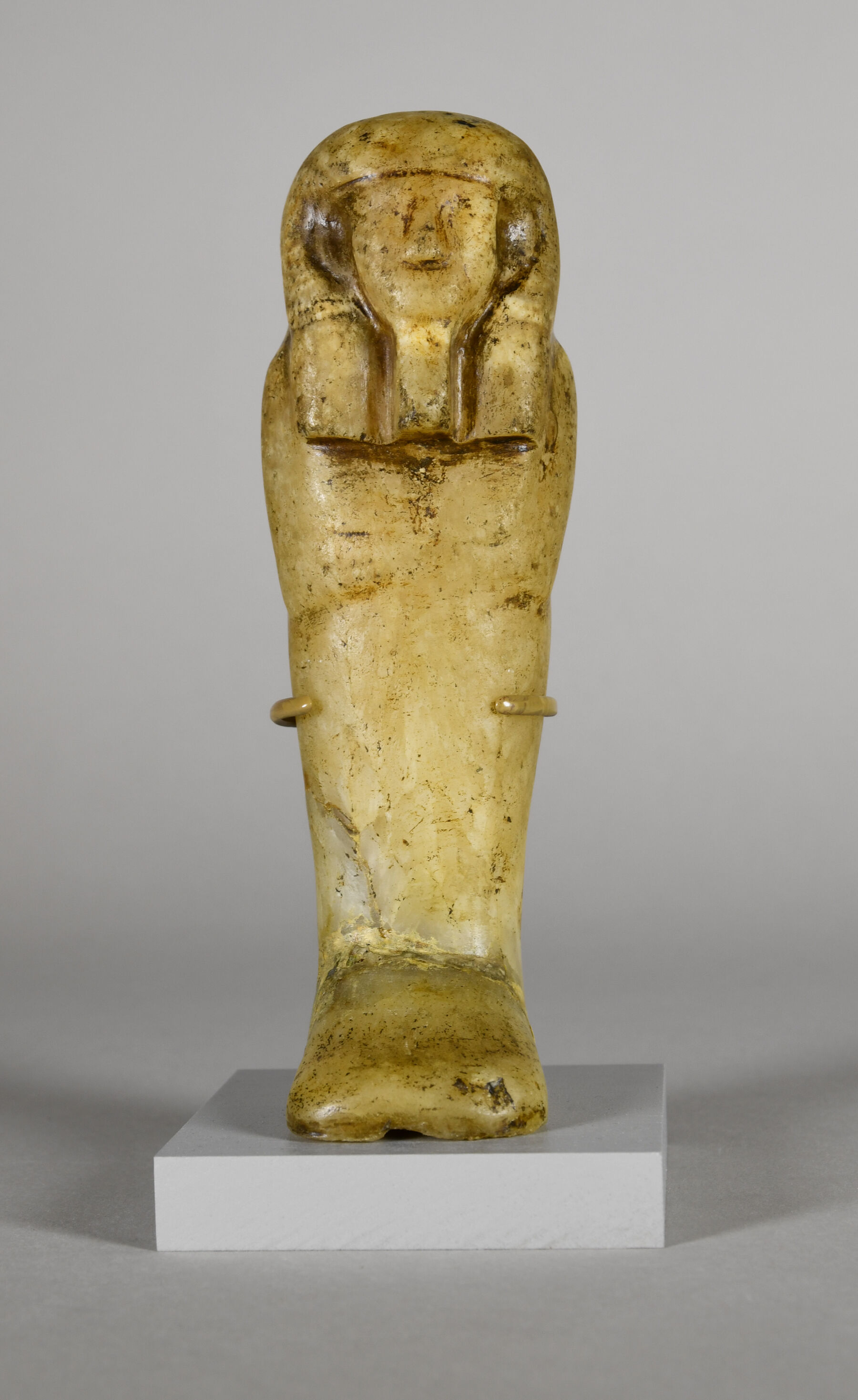Shabtis first appear at the end of the Middle Kingdom. They were crafted from various materials and deposited in burials or given as votive figurines. The decoration of shabtis at this time was varied.1 Some shabtis bore offering formulas typically found on stelae, coffins, and other funerary objects. This shows the early development of funerary figurines, possibly depicting the deceased as an Osiris.2
This small calcite figure wears a large lappet wig and rectangular beard. The wig, ears, eyes, and nose are carefully modeled. There are faint traces of a mouth. Two hands in low relief protrude from the wrappings of his mummiform body, with one grasping an ankh. The other implement is lost or was never completed. It is possible that an inscription was once painted on the shabti.
EW
-
Stewart, H.M. 1995. Egyptian Shabtis. Shire Egyptology 23. Princes Risborough: Shire Publications. https://catalog.lib.uchicago.edu/vufind/Alphabrowse/Home?source=series&from=Ägyptologische+Abhandlungen. ↩︎
-
Stewart, H.M. 1995. Egyptian Shabtis. Shire Egyptology 23. Princes Risborough: Shire Publications. https://catalog.lib.uchicago.edu/vufind/Alphabrowse/Home?source=series&from=Ägyptologische+Abhandlungen. ↩︎
Bibliography
- Stewart 1995
- Stewart, H.M. 1995. Egyptian Shabtis. Shire Egyptology 23. Princes Risborough: Shire Publications. https://catalog.lib.uchicago.edu/vufind/Alphabrowse/Home?source=series&from=Ägyptologische+Abhandlungen
